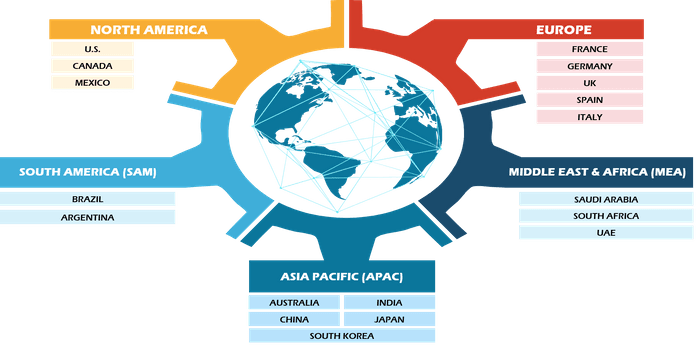Introduction
In the ever-evolving landscape of healthcare, telemedicine has emerged as a revolutionary solution, bridging the gap between patients and healthcare providers. The demand for telemedicine platforms has skyrocketed, especially in the wake of global events that have highlighted the need for remote healthcare solutions. In this guide, we will delve into the intricacies of Telemedicine Platform Development, exploring key aspects and considerations for creating effective telemedicine software apps.
Understanding Telemedicine Platform Development
1.Defining the Purpose and Scope
Before embarking on the journey of telemedicine platform development, it’s crucial to define the purpose and scope of the platform. Consider the specific healthcare services you aim to provide remotely, whether it’s general consultations, mental health support, or specialised care. Understanding your target audience and their unique needs will guide the development process.
2.Compliance and Security
Compliance with healthcare regulations and ensuring the highest standards of security are paramount in telemedicine platform development. Adhering to regulations such as HIPAA (Health Insurance Portability and Accountability Act) is non-negotiable to maintain patient confidentiality and trust. Implement robust encryption protocols and authentication mechanisms to safeguard sensitive medical data.
Key Features of Telemedicine Software Apps
1.User-Friendly Interface
A user-friendly interface is the cornerstone of a successful telemedicine platform. Patients and healthcare professionals should be able to navigate the platform effortlessly. Incorporate intuitive design principles, ensuring that users can schedule appointments, access medical records, and engage in video consultations with ease.
2.Appointment Scheduling and Management
Efficient appointment scheduling and management are critical components of any telemedicine platform. Implement a system that allows patients to book appointments at their convenience. Integrate calendar functionalities that sync with healthcare providers’ schedules, minimising scheduling conflicts and maximising accessibility.
3.Video Conferencing Capabilities
The heart of telemedicine lies in its ability to facilitate remote consultations. Implement high-quality, secure video conferencing capabilities to enable real-time communication between patients and healthcare providers. Ensure that the platform supports both one-on-one and group consultations, fostering flexibility in healthcare delivery.
4.Electronic Health Records (EHR) Integration
Seamless integration of Electronic Health Records (EHR) is fundamental for comprehensive patient care. The telemedicine platform should enable healthcare providers to access and update patient records in real-time, promoting continuity of care and informed decision-making.
5.Prescription and Pharmacy Integration
Streamline the prescription and medication process by integrating pharmacy services into the telemedicine platform. Enable healthcare professionals to electronically prescribe medications, and integrate features that allow patients to order and receive their medications seamlessly.
6.Multilingual Support
Consider the diversity of your potential user base. Offering multilingual support ensures that language barriers do not hinder access to healthcare services. Implement features that allow users to select their preferred language for consultations and platform navigation.
Technology Stack for Telemedicine Platform Development
1.Choose the Right Development Framework
Selecting the appropriate development framework is crucial for building a robust telemedicine platform. Consider factors such as scalability, security, and community support. Popular frameworks like React, Angular, or Vue.js are often preferred for building responsive and dynamic user interfaces.
2.Backend Development
For the backend, choose a reliable and scalable programming language such as Python, Java, or Node.js. Develop a secure and efficient database architecture to handle patient records, appointments, and other crucial data.
3.Cloud Integration
Leverage cloud services for scalable storage and processing capabilities. Cloud integration ensures that the telemedicine platform can handle varying workloads, providing a smooth and responsive user experience.
4.Security Measures
Implementing robust security measures is non-negotiable in healthcare-related software development. Use end-to-end encryption for data transmission, secure authentication protocols, and regular security audits to identify and address potential vulnerabilities.
5.Testing and Quality Assurance
Thorough testing is essential to ensure the reliability and effectiveness of the telemedicine platform. Conduct rigorous testing for usability, security, and performance. Engage real users in beta testing to gather valuable feedback and identify areas for improvement.
6.Launch and Continuous Improvement
Once the telemedicine platform is developed and thoroughly tested, plan a strategic launch. Provide comprehensive training for healthcare professionals and patients to ensure a smooth transition to the new platform. Solicit feedback continuously and be prepared to make iterative improvements based on user experiences and evolving healthcare needs.
7.Marketing and User Adoption
After the successful launch of your telemedicine platform, the next crucial step is to market it effectively to ensure widespread adoption. Craft a comprehensive marketing strategy that highlights the platform’s key features, benefits, and its potential to transform the healthcare experience. Utilise various channels such as social media, healthcare forums, and partnerships with medical organisations to reach a broader audience.
Consider offering promotional packages or discounts for the initial period to encourage users to try the platform. Gather testimonials from early adopters to build trust and credibility. Leverage search engine optimization (SEO) techniques by incorporating relevant keywords like “Telemedicine Platform Development” and “Telemedicine Software Apps” in your content to enhance the platform’s visibility on search engines.
User Feedback and Continuous Improvement
Feedback from users is invaluable for the ongoing success of your telemedicine platform. Establish channels for users to provide feedback easily, whether through in-app surveys, emails, or dedicated feedback forms. Regularly analyse this feedback to identify areas for improvement and prioritise updates based on user needs.
Engage with healthcare professionals to understand their experience with the platform and gather insights into how it can better support their workflows. Actively seek input from patients to enhance the user interface, appointment scheduling process, and overall satisfaction with the telemedicine services.
1.Scaling the Platform
As the telemedicine platform gains traction and user numbers increase, scalability becomes a critical consideration. Regularly assess the platform’s performance and scalability to accommodate a growing user base. Cloud services, such as AWS, Azure, or Google Cloud, offer scalable solutions that can adapt to increased demand. Collaborate with your development team to implement features that ensure the platform’s smooth operation even during peak usage times.
2.Regulatory Compliance and Security Updates
The healthcare industry is subject to evolving regulations, and compliance is an ongoing commitment. Stay informed about changes in healthcare laws and regulations, and update your telemedicine platform accordingly. Regularly audit security measures and promptly address any vulnerabilities to maintain the trust of both healthcare professionals and patients.
3.Telemedicine Platform Customization
Consider offering customization options to healthcare providers who use your platform. Some medical practices may have specific requirements or workflows that can be accommodated through customizable features. This flexibility can make your telemedicine platform more attractive to a diverse range of healthcare professionals.
4.The Future of Telemedicine
The landscape of healthcare technology is dynamic, and staying ahead of emerging trends is crucial for the sustained success of your telemedicine platform. Keep an eye on advancements in artificial intelligence, virtual reality, and remote patient monitoring. Integrating these technologies can enhance the capabilities of your platform and position it as a leader in the evolving telemedicine space.
Conclusion
Building a telemedicine platform requires a holistic approach that encompasses technical expertise, user-centric design, and a commitment to compliance and security. By understanding the unique needs of both patients and healthcare providers, and by leveraging the right technology stack, you can create a telemedicine platform that not only meets industry standards but also sets a new benchmark for remote healthcare delivery.





